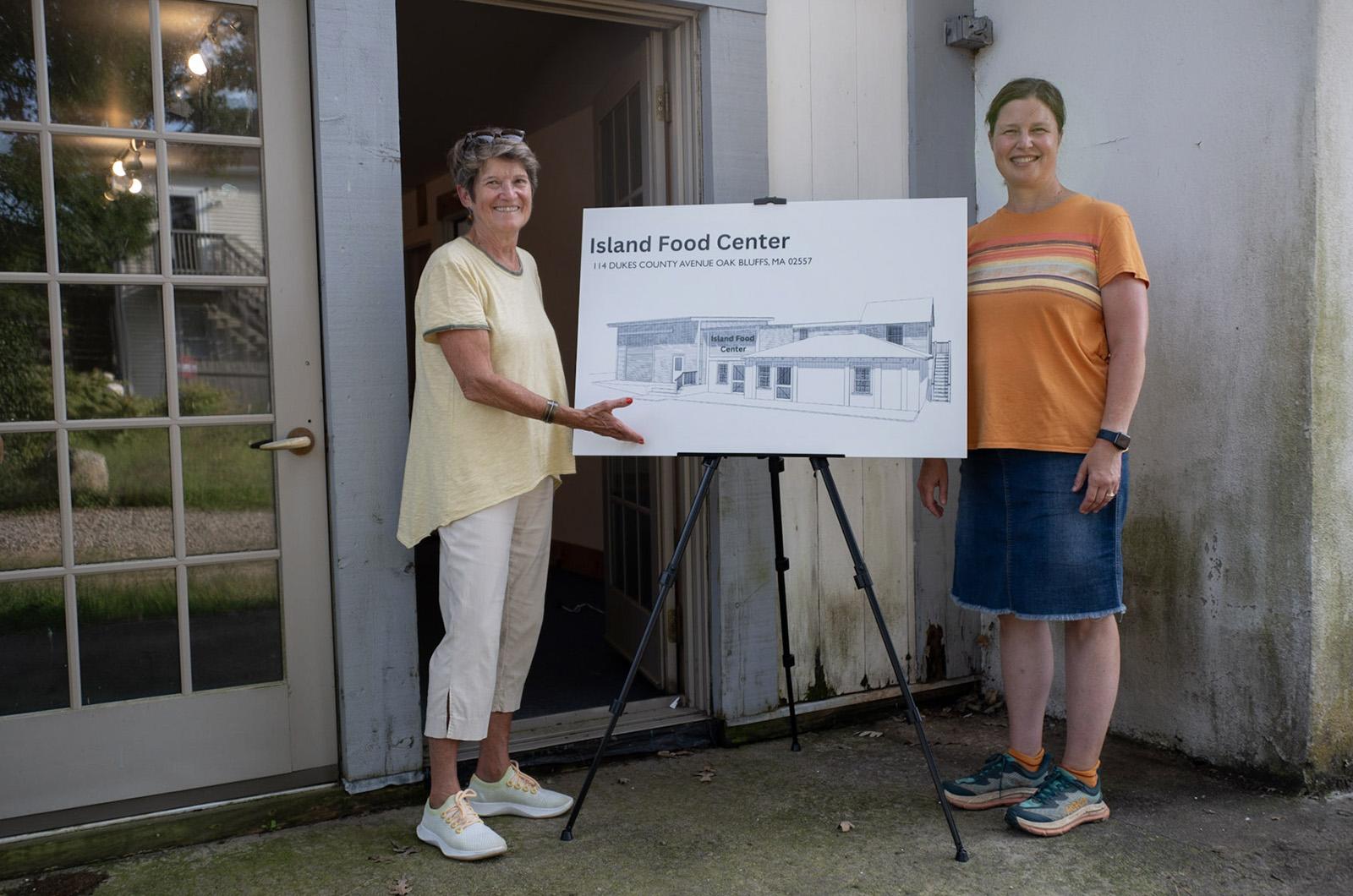A former musicians’ workshop on Dukes County avenue in Oak Bluffs will become Island Food Pantry’s permanent home, if regional and town officials agree to the proposal by the pantry’s parent nonprofit Island Grown Initiative.
Since early in 2021, the food pantry has been operating in the front room of the Portuguese American Club in Oak Bluffs — but that has no space for more than a single week’s worth of groceries at a time, Island Grown food equity director Merrick Carreiro said.
“It is very stressful. We need to have at least two to three weeks [of] backup food,” Ms. Carreiro said Tuesday, during a tour of the proposed new Island Food Center at 114 Dukes County avenue.
Island Grown purchased the property, formerly home to an automotive business and later the Pit Stop musicians’ workshop that closed in 2013, in May for $1.72 million. It has ample warehouse, retail and office space, complete with a loading dock for the refrigerated truck that makes weekly trips to the mainland for donated and low-cost foods, Ms. Carreiro said.
“That’s one of the major benefits of this building... the storage,” she said, noting the complexities of bringing food to the Island by ferry.
The property also has an apartment that is now the home of the newly-hired Island Grown Schools educator for Oak Bluffs — a position that had been hard to fill without housing, Ms. Carreiro said.
Before the new site can open, however, local officials will need to weigh in. The Martha’s Vineyard Commission is expected to schedule a public hearing on the proposal this fall as a development of regional impact. Oak Bluffs officials will then review the project, which is being designed by architect Chuck Sullivan.
There is also more fundraising that has to take place. Including the $1.72 purchase price, it will take about $2.5 million in all to complete, said Rebecca Haag, Island Grown executive director, during Tuesday’s tour. The nonprofit is conducting a capital campaign for the funding, she added.
After years of operating out of a church basement in Vineyard Haven, the food pantry merged with Island Grown and moved to the P.A. Club in early 2021.
The pantry’s clientele has doubled since the pandemic began in 2020, Ms. Haag said. Given the cost of living on Martha’s Vineyard now, she does not expect the need to decline any time soon.
“A lot of [clients] are living on very low incomes in comparison to state averages, [and] we all know that affordable housing is a major, major issue here,” she said.
About 4,200 Island residents are registered with the food pantry, Ms. Haag said, but not all of them are regular customers.
“Some people come episodically. They just come to make ends meet in January,” Ms. Haag said.
Other families may need help over a longer period, for instance if a breadwinner is injured and can’t work for months or a child is hospitalized in Boston and parents have to make costly trips to be with them, she said.
“Those 4,200 people represent a whole range of our neighbors,” Ms. Haag said.
At its new location, the pantry looks to offer in-person shopping only to senior citizens, who benefit from the regular outing and social contact with volunteers, Ms. Carreiro said. Other clients will place their orders in advance, using a simple mobile phone application with photos of products in stock, she said.
“We will get the orders and we’ll have them all packed and ready so that when people come for their pickup [at] their pre- determined time slot, their food will be ready,” Ms. Carreiro said.
Clients will give their names at a side door and then pull around to the back to pick up their orders, she said. Should mix-ups occur, there are parking stalls where they can pull in while staff and volunteers assist, Ms. Haag said.
The new system is intended to do away with the long lines and parking-lot congestion that can occur at the P.A. Club on food pantry days, as well as to save time for clients, Ms. Carreiro and Ms. Haag said.
Most of the people who come to the pantry are from working Island families for whom advance ordering will be a valuable time saver, Ms. Carreiro said.
“People are typically working two to three jobs. They’re fitting in this pickup time because they really need the food assistance, but they don’t have 45 minutes to an hour to wait to come through,” she said.







Comments
Comment policy »